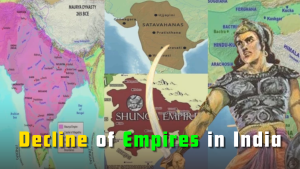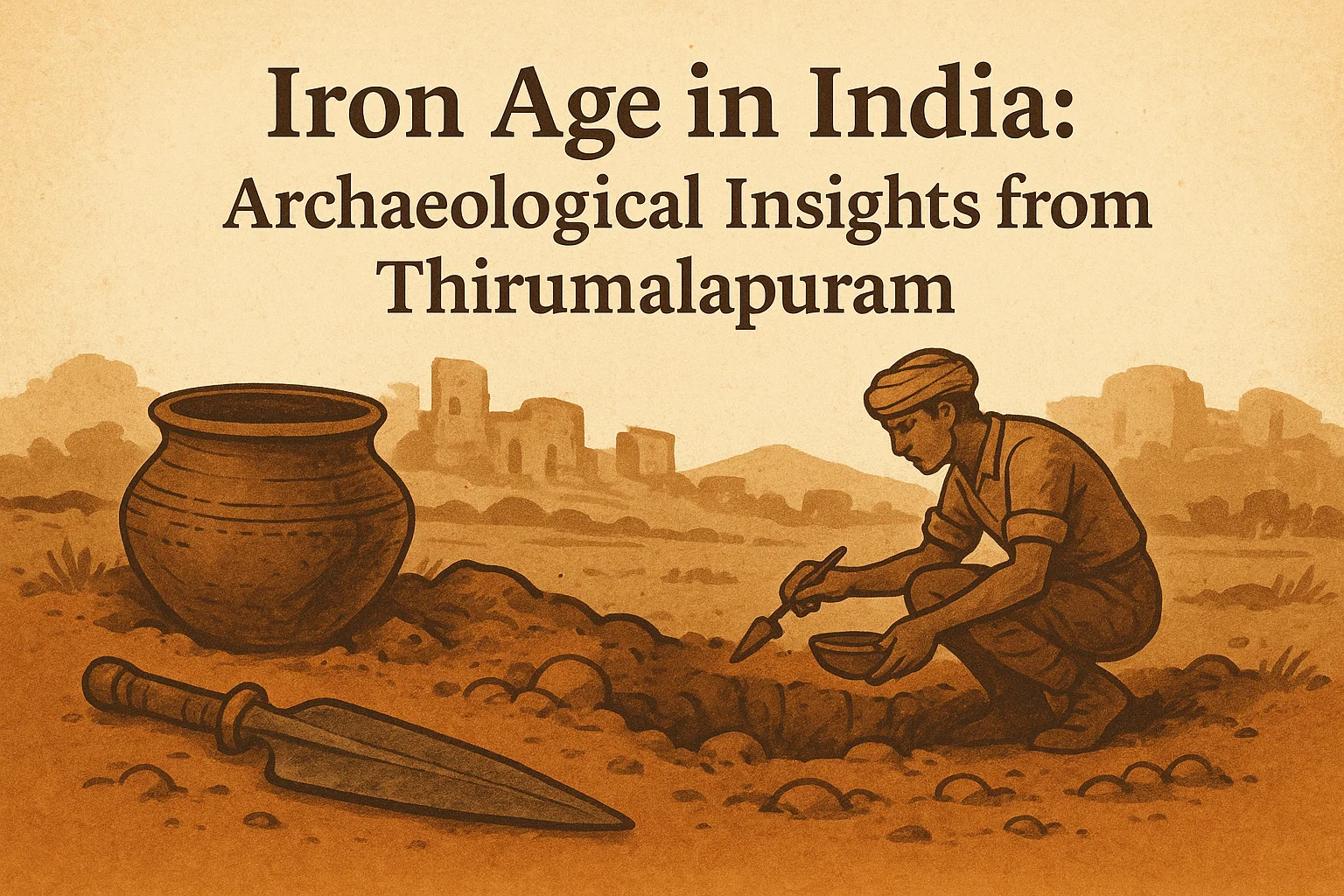Blue Carbon Credits in India – A Hidden Climate Solution
Explore India’s blue carbon potential in mangroves, seagrass, and tidal marshes. Learn how policy, finance, and reforms can unlock high-value carbon credits.

Introduction
Climate change has become the greatest challenge of our time. Rising seas, melting glaciers, and stronger storms highlight the urgent need to cut greenhouse gases, especially carbon dioxide (CO₂). While forests and renewable energy projects often receive the most attention, Abhishree Pandey’s issue brief, “Overlooked and Underutilised: Blue Carbon Credits in India’s Voluntary Carbon Market” (ORF, August 25, 2025), reminds us of an equally powerful but overlooked ally: blue carbon. Found in mangroves, seagrasses, and tidal marshes, these ecosystems capture vast amounts of carbon while also protecting coasts and supporting local livelihoods. Yet, in India’s carbon markets, their potential is barely recognised. This essay argues that India must reform its policies, finance systems, and monitoring frameworks to unlock the full promise of blue carbon credits.
To understand why blue carbon matters so deeply, we need to look more closely at what makes these ecosystems such remarkable carbon stores and why India is uniquely positioned to benefit from them.
Oceans’ Hidden Wealth
Blue carbon refers to the carbon captured and stored by ocean and coastal ecosystems such as mangroves, tidal marshes, and seagrasses. Though they cover less than 2 percent of the ocean surface, these ecosystems are responsible for nearly half of all carbon burial in marine sediments. Their ability to lock away carbon is extraordinary. A square metre of seagrass can store more than three times as much carbon as a square metre of tropical rainforest, and mangroves can hold up to four times as much carbon as forests on land.
India is particularly blessed with these natural treasures. Its rich ecosystems include the Sundarbans mangroves in West Bengal, the Godavari mangroves in Andhra Pradesh, the Pichavaram mangroves in Tamil Nadu, and seagrass meadows scattered across Tamil Nadu, Lakshadweep, and the Andaman and Nicobar Islands. These landscapes do not just serve nature—they support livelihoods, shield coastal communities from floods and storms, and provide food for millions. Yet, despite these enormous advantages, blue carbon has remained largely ignored in India’s carbon markets.
Missed Market Opportunity
India is one of the top suppliers of carbon credits in the world, with renewable energy and forestry projects forming the bulk of its trade. However, blue carbon projects barely register. Between 2020 and 2023, only 10.9 million tonnes of blue carbon credits were traded globally, a figure minuscule compared to other forms of credits.
The problem lies in neglect and underuse. Blue carbon projects face challenges that land-based ones do not. Mangroves, for instance, often fall under multiple government departments—environment, coastal management, forestry, and fisheries—creating confusion and delays. Unlike renewable energy plants, which are straightforward to build and measure, blue carbon projects require complex ecological knowledge, long timelines, and strong community involvement.
This gap means that India, despite its vast blue carbon potential, risks losing both an environmental and economic opportunity. The ecosystems themselves are at risk from rapid urbanisation, land conversion, erosion, and climate change. Without proper financial incentives to protect them, these natural carbon sinks could vanish, releasing their stored carbon and worsening global warming.
Seizing Blue Leadership
Despite these obstacles, there is a strong case for India to take bold action. By strengthening policies, improving financing systems, and establishing robust monitoring frameworks, India can make blue carbon a central pillar of its climate strategy.
This is not just about storing carbon. Blue carbon ecosystems provide multiple benefits—they protect coastlines, nurture biodiversity, and sustain livelihoods. Companies around the world are increasingly demanding “high-integrity” carbon credits that deliver such co-benefits. Giants like Google, Meta, and Salesforce have already committed to purchasing millions of tonnes of nature-based carbon credits. This global trend gives India a unique chance to turn its natural wealth into an economic advantage, while also helping vulnerable communities.
The hypothesis is clear: if India reforms its system, it can protect its coastal ecosystems, create new income streams for local communities, and establish itself as a global leader in blue carbon credits.
Beyond Carbon’s Storage
Why should India put effort into blue carbon when land-based projects are cheaper and easier? The answer lies in the unique value these ecosystems provide.
Firstly, blue carbon ecosystems are carbon powerhouses. Mangroves, seagrasses, and tidal marshes sequester carbon much faster and more permanently than most terrestrial systems. Unlike forests, they are less likely to release stored carbon unless destroyed. Secondly, they provide a host of co-benefits: mangroves protect millions of people from floods each year, saving billions of dollars in damage; seagrass beds sustain fish populations that are vital for food security; and tidal wetlands enrich biodiversity and stabilise coastlines.
This combination of climate and social benefits makes blue carbon credits higher in quality compared to standard credits from solar plants or forests. As the voluntary carbon market shifts towards credits with proven integrity, blue carbon’s reputation as a premium offset will only grow.
Barriers
Still, the road to scaling up blue carbon projects in India is filled with obstacles. These barriers can be grouped into four main categories:
- Institutional Confusion: Blue carbon projects require approval from multiple government bodies. The absence of a central authority leads to bureaucratic delays and overlapping rules. This discourages investors who prefer clear, simple regulations.
- Unclear Ownership and Benefit Sharing: Many mangroves and coastal wetlands are classified as common property or protected areas. Companies hesitate to invest when they are unsure who has rights over the carbon credits, or how revenues will be shared with local communities. Without community trust and involvement, projects are unlikely to last.
- Measurement and Verification Challenges: For any carbon credit to be credible, investors need accurate measurement, reporting, and verification (MRV). Unfortunately, MRV systems for blue carbon are expensive, time-consuming, and still developing. Without reliable data, investors fear the risk of “blue-washing.”
- Environmental Risks: Unlike solar farms, blue carbon ecosystems are vulnerable to natural forces. Rising sea levels, stronger storms, erosion, and ocean acidification threaten their long-term survival. This instability makes investors doubt whether credits will hold value in the future.
Critics’ Concerns
Not everyone believes blue carbon is worth the effort. Critics argue that blue carbon projects are too costly and uncertain compared to land-based ones.
For instance, in Asia and Central America, blue carbon credits cost between US$13 and US$35 per tonne, while standard credits average only US$7.50 per tonne. Setting up mangrove restoration or seagrass projects requires not just money but also time, expertise, and constant community participation. On top of this, the risk of losing an ecosystem to storms or rising seas makes investors wary of long-term commitments.
From this perspective, blue carbon appears to be a high-risk, high-cost option—less attractive than solar panels or afforestation. But this view misses the wider benefits and the growing global demand for premium credits.
Pathways to Progress
Instead of being discouraged, India can treat these challenges as opportunities for reform. Several concrete steps can unlock the potential of blue carbon:
- Build Strong Institutions: Create a central blue carbon authority to streamline approvals, clarify ownership, and design fair benefit-sharing models for communities.
- Innovate in Finance: Replicate international models like the Seychelles Blue Bond, which raised US$15 million for marine conservation. Indian states could issue blue bonds, while a national blue carbon fund could attract private and global investment.
- Strengthen Monitoring Systems: Develop domestic MRV frameworks and use advanced tools such as environmental DNA (eDNA) to track biodiversity and carbon. A national registry of credits would cut costs and reduce dependency on foreign standards.
- Manage Risks: Adopt adaptive management plans, introduce buffer credits to cover unexpected losses, and explore insurance schemes like those protecting coral reefs in the Caribbean.
- Empower Communities: Ensure local people benefit directly from projects, gaining income, jobs, and security. This approach not only makes projects sustainable but also encourages communities to become guardians of ecosystems.
India’s Moment to Lead
The conclusion is clear: blue carbon is a hidden treasure in India’s climate arsenal. With over 7,500 kilometres of coastline and vast mangrove and seagrass ecosystems, India has both the responsibility and the opportunity to lead.
At present, blue carbon remains a niche in the voluntary carbon market, overshadowed by renewable energy and forestry. But with the market expected to grow 15-fold by 2030, the time is right for India to invest. By building strong institutions, innovating in finance, improving monitoring, and ensuring community involvement, India can unlock the full value of blue carbon.
This is not just about reducing carbon. It is about creating jobs, protecting vulnerable people, sustaining biodiversity, and showing the world how nature can be a partner in climate action. If India acts boldly now, it can make waves not only in the carbon market but also in the global fight against climate change.
Subscribe to our Youtube Channel for more Valuable Content – TheStudyias
Download the App to Subscribe to our Courses – Thestudyias
The Source’s Authority and Ownership of the Article is Claimed By THE STUDY IAS BY MANIKANT SINGH



